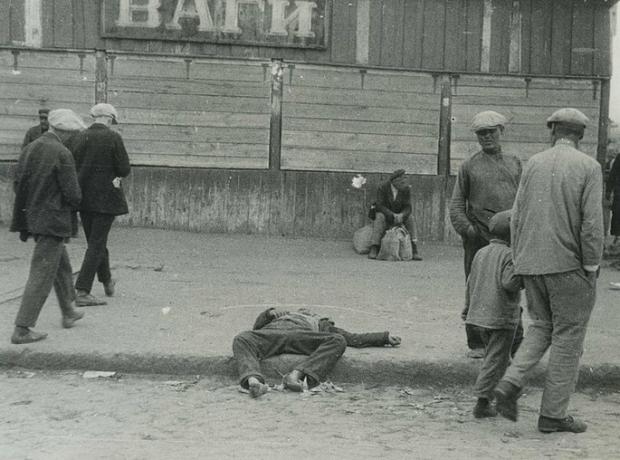The Ukrainian Holodomor represents the death of millions of inhabitants of rural areas by famine between the years 1932 and 1933. The term holodomor (which in Ukrainian means "death by hunger") is associated with the collectivization policies of agricultural production imposed by Josef Stalin (1878-1953).
The numbers are imprecise due to the information control carried out in the period by the Soviet Union. Among controversies, it is estimated that between 1.5 and 7 million Ukrainians died directly or indirectly because of hunger in the period.
The famine that devastated the Ukrainians is considered by historians as a genocide imposed by the Stalinist government on the population to impose acceptance of the regime.
The term "genocide" is used for considering the event as "artificial famine". Historians claim that there was an intention to restrict access to food as a way of imposing power.
Holodomor, the Ukrainian holocaust
In 1928, Stalin came to power in the Soviet Union and the regime hardened with persecution and confrontation of opponents. A wave of collectivization of agriculture followed.
As a result, the territories of Ukraine that were traditionally places of intense resistance to the centralized power of Moscow were the target of harsh sanctions by the Stalinist government.
In the field, the so-called kulaks (peasant bourgeoisie) refused to have their property confiscated by the state. There were numerous cases of fires on properties and part of the production, as well as the death of animals and sabotage of the harvest as a form of protest.
This scenario led to a series of revolts and armed uprisings against Stalin's government, causing a drop in food production, starting with shortages.
In a letter to a colleague Stalin he stated: "If we do not do anything to improve the situation in Ukraine, we run the risk of losing Ukraine."
The collectivization process imposed by the Soviet government intensified. Almost all remaining grain production was withdrawn, household food stocks were banned, and control in Ukrainian territory was intensified.
The so-called "law of five ears" came into force and people who stole food from kolkhoz (collective farms owned by the state) were punishable by firing squad.
Thus, at the end of 1932, famine affected almost the entire population. In addition to hunger, diseases linked to malnutrition were advancing and decimating thousands of families.
1933, the height of the Holodomor
Despite intense restrictions on access to food, the Soviet government still sensed the resistance of the Ukrainian peasantry. So, in January 1933, the government imposed the total confiscation of food (not just grain).

There are documents with the accounts of witnesses at the time about a large number of corpses in the streets, people driven mad and even episodes of cannibalism due to hunger.
Adequacy to the regime and the end of the Holodomor
With the advance of the year 1933, there was the extinction of the Ukrainian resistance foci. Survivors of the famine imposed by the Stalinist regime received training and began to work on the collective lands of the state.
The adaptation to the Soviet production model meant that the productive goals determined by the government were achieved, the State reduced sanctions and, consequently, hunger.

Several historians still try to estimate the number of people killed by starvation in Ukraine during the Holodomor, it is certain that the episode marks one of the greatest genocides in the history of mankind.
See too:
- Stalin
- Stalinism in the USSR
- Gulag
